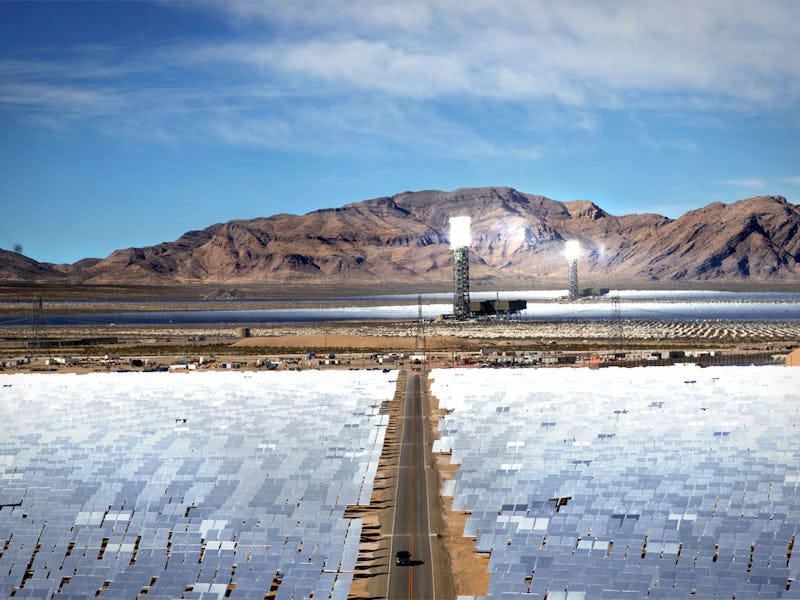Wind and Solar Farms Are Making It Rain in the Sahara Desert (Literally)
Precipitation as side perk.

If you were location scouting places to install a massive solar or wind farm, the desert would already seem to have a lot to offer. It’s big, empty, and super hot (at least during the day). There’s not a ton of vegetation or trees to cast any shade on your glimmering solar cells, and there aren’t a ton of people or highways or buildings you’d need to kick out to make room for these humanity-saving structures, either.
But some new research suggests that that’s not all that the desert has to offer future generations of renewable energy development. In fact, some seriously wild new research from researchers at the American Association for the Advancement of Science indicates that when you erect solar and wind farms in the Sahara Desert, you don’t just get more renewable energy, you get something pretty surprising: Rain and vegetation in some of the other deserts that happen to be nearby.
“The impacts on regional climate would be beneficial rather than detrimental,” the paper’s conclusion reads. “If carefully planned, these farms could also trigger more precipitation, largely because of a previously overlooked vegetation feedback.”
This is a pretty huge deal, the research explains, because there’s always been some concern that renewable energy — or more precisely the structures we build to enable it — might have some kind of unanticipated environmental consequences. Now, instead of circulating largely baseless fears that wind farms are killing the birds, we can be more precise about what these unanticipated consequences are: More biodiversity, plant life, and precipitation.
If you install enough wind and solar panels here, it will start to rain more nearby.
Why Solar and Wind Farm Installation Makes it Rain
The researchers arrived at their conclusion by modeling the impact of solar and wind farms in the Sahara desert on its neighboring region, the Sahel, which encompasses more than a million square miles. The researchers decided to look into the question to make sure that the desert’s perceived advantages for this kind of development actually played out.
As it happens, both the wind and the solar farms appear to have unanticipated benefits that can increase the instance of precipitation and plant life in nearby Sahel.
Wind farms in particular seem to be good at generating this precipitation-related side perk. When wind farms do there thing, warmer air near the ground gets mixed with the cooler air that’s above it, creating a “feedback loop” which drives up evaporation, leading to more rain and, eventually, more plant growth (which then leads to even more evaporation, etc).
Solar farms also help contribute to this effect by reducing the amount of sunlight that gets reflected, creating its own feedback loop that increases precipitation by about 50 percent, according to the authors’ estimates.